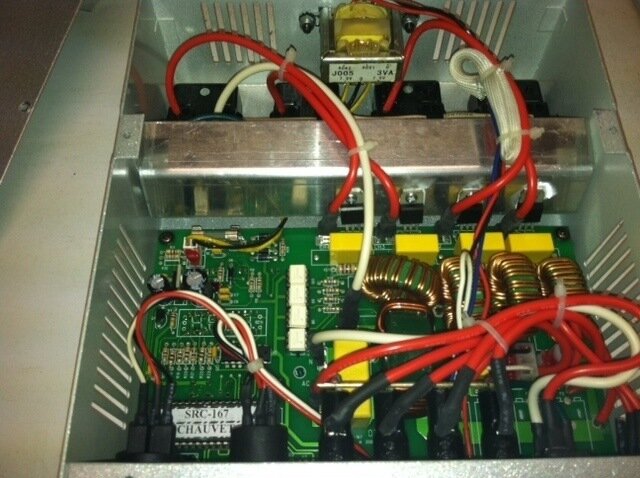Hey CB.
So we have three Chauvet DMX-4 dimmers. The older silver ones before they changed the color to black. Certainly not a fancy or expensive dimmer, but useful for Christmas lights and other small wattage loads. They have been handy distributed dimming supplements to our main system. Anyway, at least half the channels have stopped working, they are either stuck at 0 intensity or stuck at full. I was wondering how hard it is to replace the triac in these units, as I'm sure someone on here has done it before. If not, I know they are cheap dimmer packs, and it won't break us to buy new packs. I'm just investigating my options at this point and thought I would see if anyone on CB has had experience repairing these or similar quality DJ style packs.
Of course, I have started to dive into past CB threads on this topic, but I'm really looking for tips on doing the actual repair itselfs and which triacs to use.
Unfortunately our packs are in use for a show right now, but I can open one up on Monday to get a look at the triacs.
So we have three Chauvet DMX-4 dimmers. The older silver ones before they changed the color to black. Certainly not a fancy or expensive dimmer, but useful for Christmas lights and other small wattage loads. They have been handy distributed dimming supplements to our main system. Anyway, at least half the channels have stopped working, they are either stuck at 0 intensity or stuck at full. I was wondering how hard it is to replace the triac in these units, as I'm sure someone on here has done it before. If not, I know they are cheap dimmer packs, and it won't break us to buy new packs. I'm just investigating my options at this point and thought I would see if anyone on CB has had experience repairing these or similar quality DJ style packs.
Of course, I have started to dive into past CB threads on this topic, but I'm really looking for tips on doing the actual repair itselfs and which triacs to use.
Unfortunately our packs are in use for a show right now, but I can open one up on Monday to get a look at the triacs.
Last edited:




